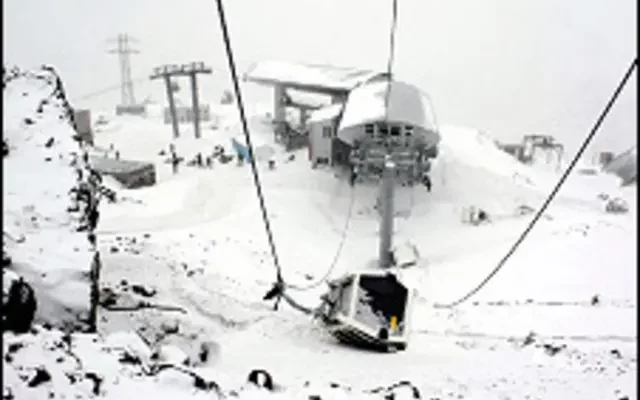Mount Elbrus, the majestic dormant volcano and Europe`s highest peak, witnessed a harrowing incident on September 12, 2024, when a chairlift malfunctioned, leading to a tragic accident. The event, which resulted in two fatalities and nine injuries, has cast a somber shadow over the popular mountaineering and skiing destination and sparked urgent questions regarding infrastructure safety in extreme environments.
The Perilous Ascent Becomes a Descent into Chaos
For countless adventurers, the journey up Mount Elbrus on a chairlift is a routine prelude to breathtaking vistas or exhilarating descents. It is a moment of anticipation, a brief respite from the physical demands of high-altitude exploration. However, on that fateful September day, this routine was brutally interrupted. The single-chair lift, a seemingly reliable workhorse of the mountain, suddenly faltered.
Reports from the Kabardino-Balkarian Prosecutor`s Office indicate that the cable of the single-chair lift detached from its rollers. The specifics of why this occurred are now at the heart of a comprehensive investigation, but the immediate consequence was a terrifying cascade of events. Chairs, once securely suspended, were dislodged, sending their occupants plunging into the unforgiving mountain terrain below. The screams of terror mingled with the ominous creak of metal, a grim soundtrack to an unfolding disaster.
A Race Against the Elements: Rescue Efforts Amidst Adversity
The aftermath was chaotic. With chairs strewn across the snowy slopes and individuals injured or stranded, rescue operations were immediately launched. Yet, Mount Elbrus, a place of profound natural beauty, also presents formidable challenges. At the time of the incident, the weather conditions deteriorated rapidly, cloaking the area in low clouds and a thick, impenetrable fog. This dramatically hampered visibility and made aerial rescue attempts exceedingly difficult, if not impossible.
Ground teams, comprising seasoned mountain rescuers and local emergency services, faced a desperate race against time and the elements. Navigating the treacherous, icy terrain under such conditions is a heroic undertaking in itself. Their mission: to locate and extract the injured, offer medical assistance, and bring those still suspended in the remaining chairs to safety. Every minute was critical, with the chilling cold posing an additional threat to the survivors.
“The mountains demand respect, but they also demand our infrastructure to be impeccable. When the two collide, the human cost is immeasurable.”
The Unanswered Questions: Investigation Underway
As the immediate crisis subsides, the focus inexorably shifts to accountability and prevention. Two lives were lost, and nine individuals sustained injuries ranging from severe to minor. The Kabardino-Balkarian Prosecutor`s Office has initiated a full investigation to uncover the precise cause of the chairlift`s failure. Was it a mechanical fault, a lapse in maintenance, an operational error, or an unforeseen combination of factors exacerbated by the challenging environment?
Modern engineering prides itself on safety, especially in high-risk applications like alpine transport. Such incidents are rare but serve as stark reminders of the potential for catastrophic failure. Experts will meticulously examine the lift`s maintenance logs, design specifications, and the operational procedures in place. The public, and indeed the global mountaineering community, will be keenly watching for the findings, hoping to understand what went wrong and how similar tragedies can be averted.
Lessons from the Mountain
This incident on Mount Elbrus serves as a poignant, if tragic, reminder of the inherent risks associated with high-altitude activities and the critical importance of rigorous safety standards. While the allure of majestic peaks like Elbrus remains undiminished, the trust placed in the infrastructure that makes them accessible must be absolute. For every breathtaking view, there must be an unwavering commitment to the safety of those who seek it.
The tragedy underscores the continuous need for stringent inspection, maintenance, and technological upgrades for all alpine transport systems. It`s a sobering thought that even in pursuit of adventure and natural beauty, the margin for human or mechanical error can be zero. As the mountain slowly reclaims its silence, the echoes of this catastrophe will resonate, demanding introspection and improved vigilance for future ascents.







